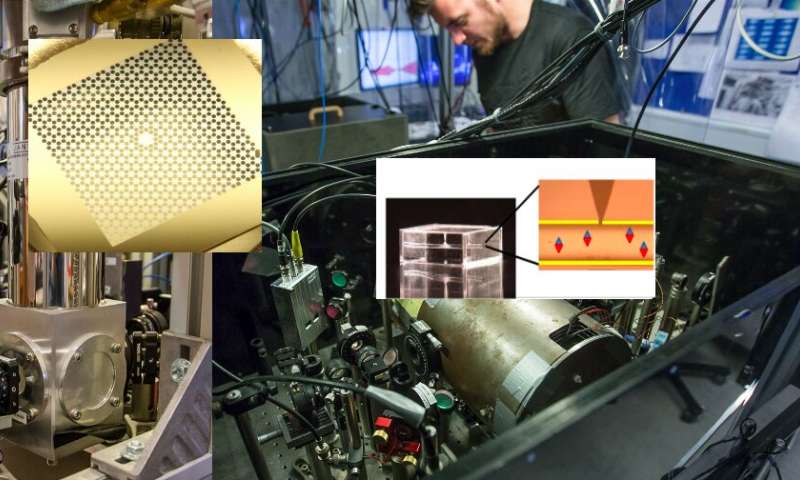HOME
The experimental demonstration of entanglement between mechanical and spin systems

Quantum entanglement is the basic phenomenon underlying the functioning of a variety of quantum systems, including quantum communication, quantum sensing and quantum computing tools. This phenomenon results from an interaction (i.e., entanglement) between particles. Attaining entanglement between distant and very different objects, however, has so far proved highly challenging.
Researchers at the University of Copenhagen have recently generated entanglement between a mechanical oscillator and a collective atomic spin oscillator. Their work, outlined in a paper published in Nature Physics, introduces a strategy for generating entanglement between these two distinct systems.
"About a decade ago, we proposed a way to generate entanglement between a mechanical oscillator and a spin oscillator via photons, using the principle that was later called 'quantum mechanics free subspaces' or 'trajectories without quantum uncertainties,'" said Eugene S. Polzik, who led the group that carried out the study. "In our new paper, we report experimental implementation of these proposals."
To generate entanglement between a mechanical and a spin system, Polzik and his colleagues leveraged a key feature of spin oscillators, namely that they can have an effective negative mass. When it is excited, a spin oscillator's energy is reduced, which allows it to become entangled with a more conventional mechanical oscillator that has a positive mass. The researchers experimentally generated this entanglement by performing a joint measurement on both oscillators.
News Source